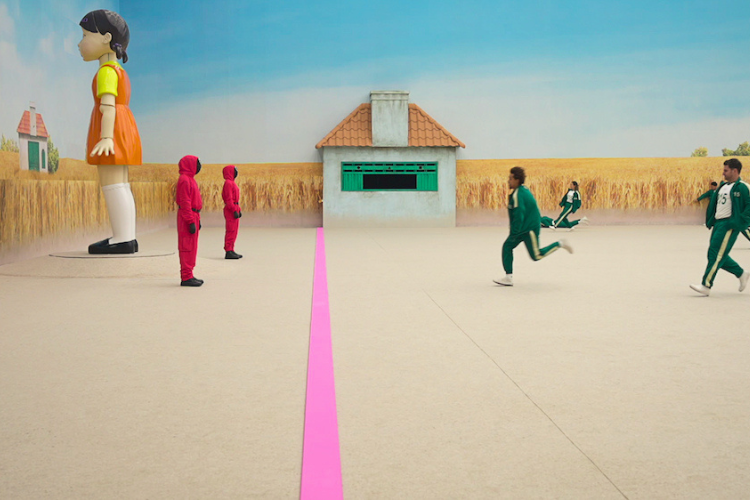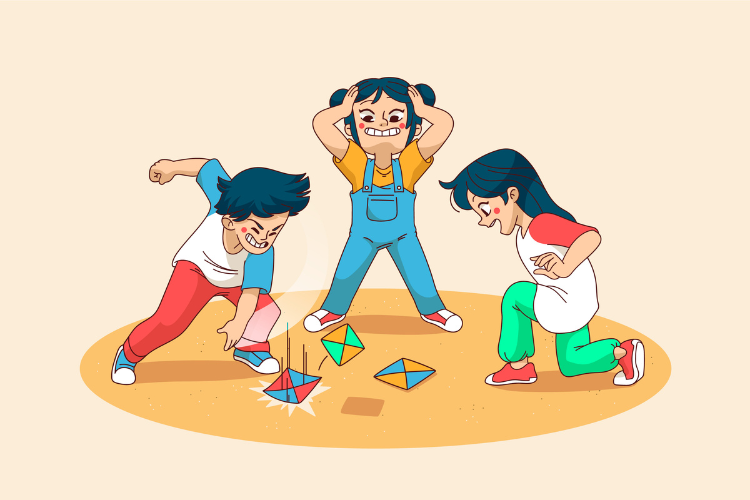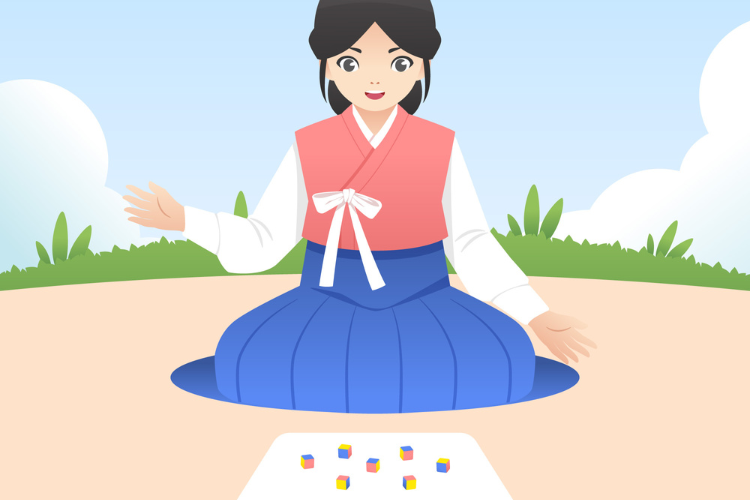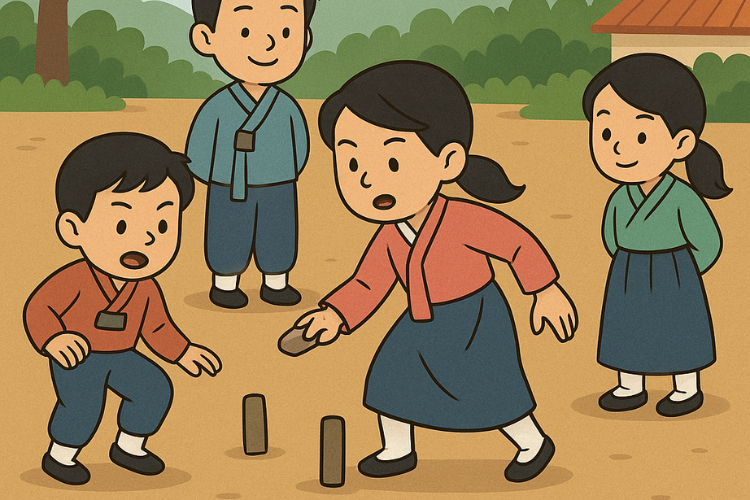What if learning Korean could be as fun as playtime?
In Korea, traditional children’s games aren’t just for fun; they’re packed with cultural and language learning too. You might even recognize a few if you’ve seen ‘Squid Game’! Let’s dive into some of the most iconic Korean games and explore the words and phrases that go with them.
Whether you’re revisiting childhood memories or discovering something totally new, these games are a playful way to build your Korean vocabulary.
1. 무궁화 꽃이 피었습니다 (mu-gung-hwa kko-chi pi-eot-seum-ni-da) – The Rose of Sharon Has Bloomed

You probably know this from ‘Squid Game’, but it’s actually a classic Korean game played by kids for generations.
One person (the tagger) stands facing away and says:
“무궁화 꽃이 피었습니다!”
(mu-gung-hwa kko-chi pi-eot-seum-ni-da)
→ “The Rose of Sharon has bloomed!”
When they turn around, anyone caught moving is out! Kids often freeze in hilarious poses, making it even more fun. This phrase is a fun way to get used to Korean rhythm and sentence structure while also connecting with cultural symbols like the 무궁화 (mu-gung-hwa).
Did you know that 무궁화 (mu-gung-hwa), known as Hibiscus syriacus and commonly called the Rose of Sharon, is the national flower of Korea?
2. 딱지치기 (ttak-ji-chi-gi) – Ttakji Game

Another ‘Squid Game’ favorite!
This is a fast-paced game where folded paper squares, 딱지 (ttak-ji), are thrown to flip the opponent’s piece. It’s all about force and angle, and shouting victory when yours lands just right.
Useful Vocabulary:
치기 (chi-gi) – from 치다 (chi-da), ‘to hit’
딱지 (ttak-ji) – the folded paper tile used to play
If you wanna sound like a local? Try this:
“딱지를 뒤집었어!”
(ttak-ji-reul dwi-jib-eot-seo)
→ “I flipped the ttak-ji!”
Kids often make their own ttakji from old notebooks, and battles can get seriously intense (and loud!).
3. 공기놀이 (gong-gi-no-ri) – Korean Jacks

This one’s all about hand-eye coordination! In 공기놀이 (gong-gi-no-ri), you toss one small stone, 공기 (gong-gi), in the air and try to scoop up others before catching it again.
Useful Vocabulary:
공기 (gong-gi) – the little plastic or stone beads
놀이 (no-ri) – play/game
This game helps you learn counting-related verbs and phrases like 하나 (ha-na), 둘 (dul), 셋 (set), i.e, 1, 2, 3, and 잡다 (jab-ta), meaning to catch.
Even though it looks simple, the levels get harder, and it’s really addictive once you get the hang of it.
4. 비석치기 (bi-seok-chi-gi) – Korean Stone-Throwing Game

This traditional game involves placing flat stones, 비석 (bi-seok), on the ground. Players take turns throwing their own flat stones at the opponent’s, trying to knock them down. It’s simple but strategic, accuracy is everything!
Useful Vocabulary:
비석 (bi-seok) – tombstone or flat stone
치기 (chi-gi) – hitting
It’s also a great way to naturally practice verbs like 맞히다 (maj-hi-da) or to hit accurately and 던지다 (deon-ji-da) or to throw.
5. 술래잡기 (sul-lae-jap-gi) – Korean Tag

Just like tag, but the one who’s “it” is called the 술래 (sul-lae).
It’s a game full of running, laughing, and calling out your friends’ names to catch them. The rules are simple, but everyone gets competitive quickly!
Useful Phrases:
잡았다! (jab-at-da) – “Got you!”
도망가! (do-mang-ga!) – “Run away!”
You’ll often hear these words in Korean playgrounds and sometimes even in K-dramas. It’s not just a game; it’s a great way to get used to basic action vocabulary in the most fun way.
Let the Games Begin!
Korean children’s games are full of simple verbs, action-based phrases, and cultural expressions that are easy to remember and super fun to say. And if you’re a ‘Squid Game’ fan, you’ve already seen how dramatic (and intense!) they can get.
From learning how to shout “Got you!” in 술래잡기 (sul-lae-jap-gi) to reciting poetic lines in 무궁화 꽃이 피었습니다 (mu-gung-hwa kko-chi pi-eot-seum-ni-da), you’re picking up Korean without even realizing it.
So next time you’re studying Korean, why not play a little too?
다음에 또 만나요! (da-eum-e tto man-na-yo!) – See you next time!
Written by Surabhi
Connect with us on Instagram | X | YouTube for more content, interviews, & news.














